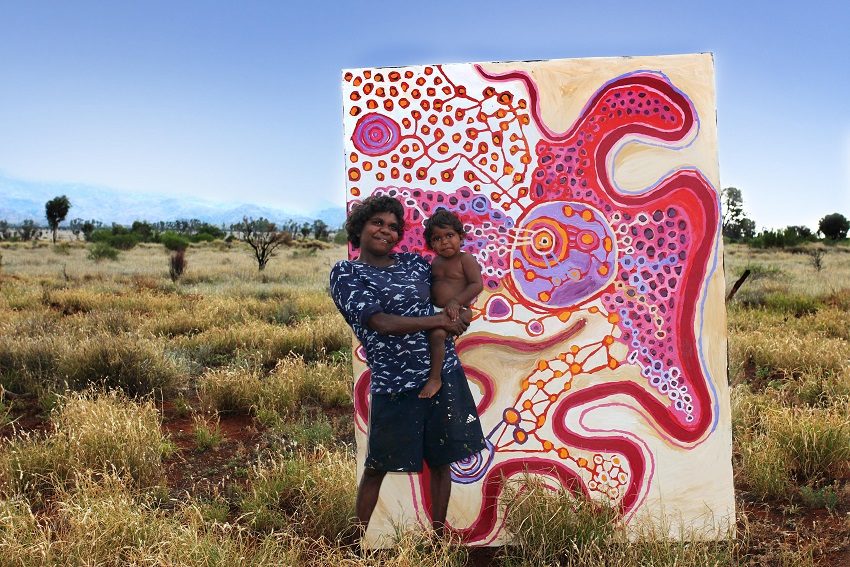New gallery run for and by Anangu artists opens in Adelaide

For decades the art centres of the Anangu Pitjantjatjara Yankunytjatjara Lands have supported Anangu artists and their remote communities. Now a new Adelaide gallery brings that legacy into the heart of the city.
From the region’s longest-running centre at Ernabella, which recently celebrated its 70th anniversary, to Iwantja Arts at Indulkana which counts Archibald and Ramsay Art Prize finalist Vincent Namatjira among its resident artists, these seven APY Lands hubs in north west South Australia have long brought invaluable economic, social and health benefits to artists and their communities.
Six years ago, these centres came together to find new ways to help their artists network and form partnerships around the country. For many artists working in remote communities, simple geographic isolation from the industry and infrastructure of Australia’s professional art world continues to pose a real barrier that social media and technology can only begin to bridge. Although many of the older, established artists of these communities already have such relationships in place, it was important to lay the groundwork for the next generation of young and emerging artists to build sustainable careers.

As Amata-based artist and APY Art Centre Collective director Nyunmiti Burton tells The Adelaide Review via interpretor, the decision for the centres to come together was a natural progression. “This is how we do it anyway,” she says of the family lines that run throughout the APY Lands. “We’re telling the same story, and when we work together it makes us stronger. We might have lots of separate companies,” she says, “but it’s one vision, one story.”
Occupying part of the former Night Train complex in Light Square, the Adelaide gallery follows the first anniversary of its successful Sydney counterpart. While the Darlinghurst gallery has been a success, opening an Adelaide centre holds an even greater significance. Out the back of the APY Collective’s new gallery space sits a larger area that once hosted ghost-themed theatrical dining experiences. That space is now being turned into a working studio, that will in effect function as an eighth APY Lands arts centre, and the first to be established off-Country.

Forging an important link between the city and the APY Lands, the studio will allow artists to continue their work while visiting family and healthcare providers in Adelaide. Until renal care facilities at Ernabella open, APY Lands residents must travel to Adelaide for treatment which can place great stress on artists and their families. The collective has partnered with Purple House and NPY Women’s Council to make that process smoother, with shuttle buses running between the centre and treatment facilities.
The APY Art Centre Collective was established by and for Anangu artists, initially funded from the proceeds of art sales without government intervention. While its supporters now include federal and state governments and the Australia Council, the agency and self-determination of the Anangu community remains central. In an industry that has often relied on non-Indigenous art dealers and galleries as intermediaries, such artist-run initiatives work to reshape the power balance of the art world and reduce exploitation.

But, most importantly, it will secure a future for Anangu artists, on their own terms. “These men had this idea because their culture is so strong and important,” Burton says of the elders who laid the groundwork for today’s arts centres. “They knew that they had to find new ways of handing it down, because people were away from home.
“We’re all one big family, [but] our family’s a long way away having a city life – people are really sick down here, on dialysis,” Burton says. “We miss their faces, so now we’re together again. This is the final piece, we’re together again through this space.”
APY Art Centre Collective
9 Light Square
apygallery.com
Header image:
Sharon Adamson of Tjala Arts and her son Walter in Amata (Photo: Tjala Arts)